CUSTOM SOFTWARE DEVELOPMENT
Custom software development involves creating tailored software solutions designed to meet the specific needs and requirements of a business or organization. This process encompasses various stages, from initial concept development to deployment and ongoing support.
At Alpheratz, we are qualified to support in the following areas:
Requirements Gathering and Analysis
- Stakeholder Consultation: Engaging with key stakeholders to understand their needs, pain points, and goals.
- Defining Specifications: Documenting detailed software requirements, including functional and non-functional aspects, user stories, and acceptance criteria.
Design
- System Architecture: Developing the overall architecture of the software, including database design, application structure, and technology stack.
- User Interface (UI) and User Experience (UX) Design: Creating wireframes and prototypes to visualize the application’s layout and user flow, ensuring it is intuitive and user-friendly.
Development
- Coding: Writing the actual software code based on the defined specifications, using appropriate programming languages and frameworks.
- Version Control: Utilizing tools like Git to manage code versions, track changes, and collaborate effectively among development teams.
Integration
- Third-Party Integrations: Ensuring that the custom software can interface seamlessly with existing systems, applications, and databases, including APIs and other services.
- Data Migration: Transferring data from legacy systems to the new application, ensuring data integrity and security.
Testing
- Quality Assurance (QA): Conducting various testing phases (unit testing, integration testing, system testing, user acceptance testing) to identify and fix defects.
- Performance Testing: Evaluating the software’s performance under different conditions to ensure it meets scalability and speed requirements.
Deployment
- Deployment Planning: Developing a rollout plan that includes preparation for deployment, training users, and minimizing disruption to business operations.
- Go-Live: Launching the software into a production environment and ensuring all systems are functioning correctly.
Maintenance and Support
- Ongoing Support: Providing technical support, troubleshooting, and addressing user issues after deployment.
- Software Updates: Regularly updating the software to fix bugs, improve performance, and add new features based on user feedback.
Documentation
- Technical Documentation: Creating documentation for developers, including architecture, code comments, and API specifications.
- User Documentation: Developing user manuals and training materials to help end-users understand how to use the software effectively.
Agile Development Methodology
- Iterative Development: Often utilizing agile methodologies (like Scrum or Kanban) to break the development process into smaller, manageable increments, allowing for flexibility and continuous feedback.
- Regular Updates: Holding sprint reviews and retrospectives to assess progress and make necessary adjustments.
Collaboration and Communication
- Cross-Functional Teams: Working collaboratively across different teams, including developers, designers, QA engineers, and business analysts.
- Client Involvement: Engaging clients throughout the development process to gather feedback and ensure the product aligns with their vision and expectations.
